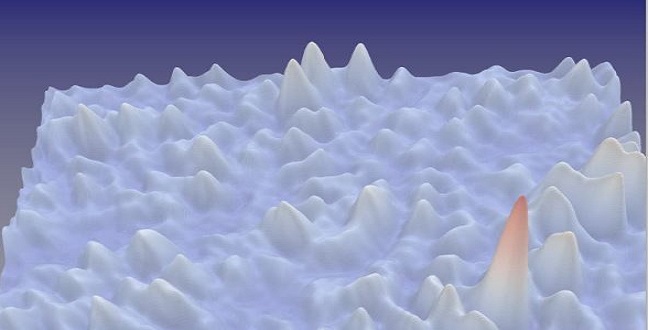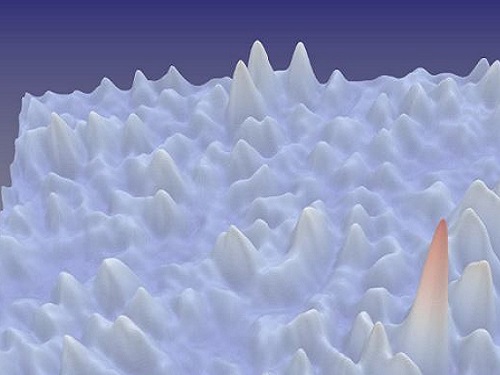Electrical Engineering
Optical chips harness the power of rogue waves
A microchip designed to generate and control rogue waves of light on the nano-scale has many potential applications.


A nano-scale optical chip developed by KAUST researchers could have widespread applications in natural hazard prediction and telecommunication networks.
© 2015 KAUST
A microchip designed to generate and control rogue waves of light on the nano-scale has many potential applications.An optical chip to create and harness the power of nanoscale rogue waves of light could ultimately lead to better prediction systems for weather events and natural disasters by improving researchers’ understanding of the mechanisms that underpin chaotic wave events1.
Natural catastrophic events are inherently unpredictable, stemming from high-energy, chaotic systems that are difficult to understand or emulate. Andrea Fratalocchi, and his team from KAUST, in collaboration with researchers at universities in the UK and the Netherlands, are inspired by such random and complex phenomena for new technologies.
“We were collaborating to build new optical chaotic resonators for enhanced energy storage,” says Fratalocchi from KAUST’s Division of Computer, Electrical and Mathematical Science and Engineering. “Whilst performing theory on these structures, we saw huge photonic waves appear in our simulations. We had no idea where these fascinating structures came from, and so we decided to investigate further.”
The researchers built an optical chip of just 40 micrometers in size, designing its shape to maximize the potential for creating rogue waves of light. Fratalocchi came up with the idea for the quarter-stadium shape of the chip following his mathematical studies in a field described as ‘chaotic billiards’.
“If you launch a classical particle inside such a system, it follows a totally random trajectory,” explains Fratalocchi. “When we directed photons into our quarter-stadium shaped chip via the micro-scale optical channel, we observed the formation of numerous waves that evolve completely randomly, generating a ‘photonic sea’.”
Within this sea, the researchers were able to control the formation of rogue waves by limiting the number of waves flowing through the chip at any one time. The exact shape of the chip improved the researchers’ control over the waves — rather like accurately designing the coastline of a small lake.
Their insights could translate to other domains and prove invaluable to scientists hoping to understand and predict natural disasters such as tsunamis. Rogue waves are also known to create disturbances in data communication networks, which Fratalocchi hopes could be alleviated: “We have shown that rogue waves manifest themselves in a window where the losses of a system are perfectly balanced — not too high, not too low. We could add an absorber into communication networks to increase the losses to a point where the rogue waves simply disappear.”
Many other applications are possible. For instance, using the chips to develop an ultrafast and highly secure cryptographic system could offer further potential for communication networks, says Fratalocchi.
References
- Liu, C., van der Wel, R.E.C., Rotenberg, N., Kuipers, L., Krauss, T.F. et al. Triggering extreme events at the nanoscale in photonic seas. Nature Physics 11, 358-363.I article
You might also like

Bioengineering
Smart patch detects allergies before symptoms strike

Computer Science
Green quantum computing takes to the skies

Electrical Engineering
Micro-LEDs boost random number generation

Bioengineering
Sensing stress to keep plants safe

Computer Science
Sweat-sniffing sensor could make workouts smarter

Electrical Engineering
New tech detects dehydration by touching a screen

Electrical Engineering
A new interface for efficient electronics

Electrical Engineering



